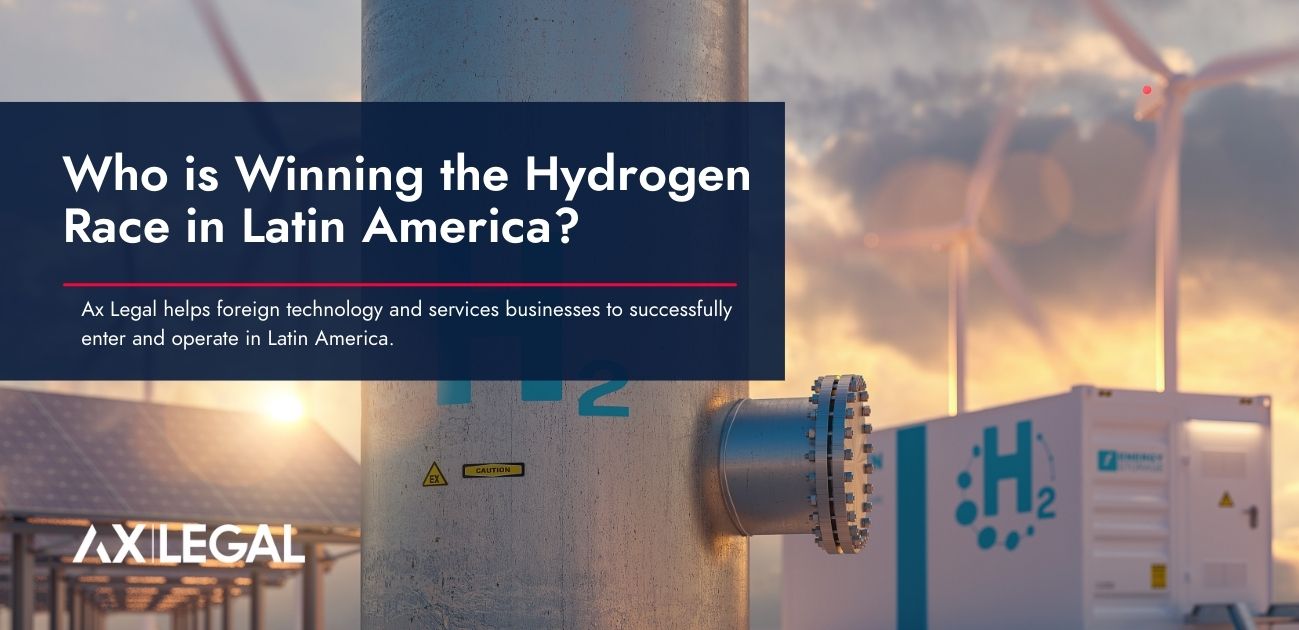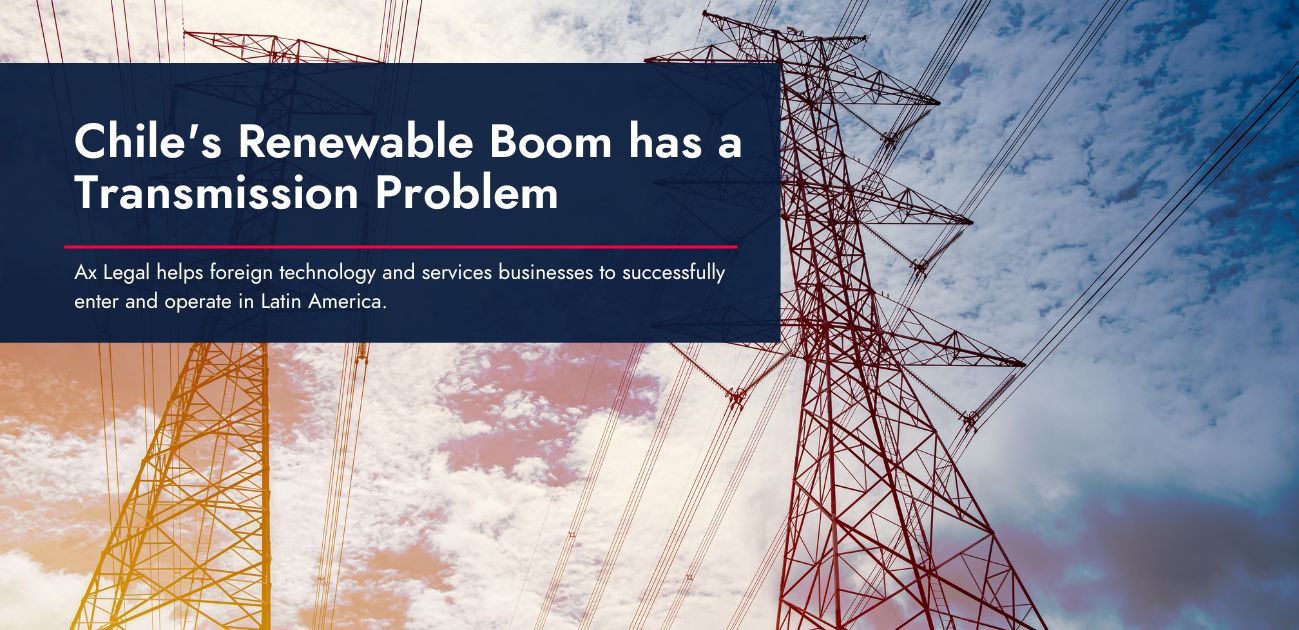Hydrogen in Chile – Where Does the Industry Stand Today?
In 2020, Chile released its national green hydrogen strategy, which set out to make the country the top destination for hydrogen investment in Latin America by 2030. The goal is to have at least 5 GW of electrolysis capacity operating, producing at least 200k/tons of hydrogen per year, and reaching a price of US$1.50 per kilogram.
Chile has the right conditions to build a hydrogen industry that can compete on a global scale. The north of the country is blessed with the highest solar radiation in the world and the southern coasts have plenty of wind. These natural advantages will drive the huge amounts of renewable energy that will be needed to produce green hydrogen.
The development roadmap used in the national hydrogen strategy envisions three stages. The first focuses on large-scale domestic consumption through existing demand, for example in refineries. The second stage would spread hydrogen use to the transport sector and exports. The third stage would involve large-scale deployment of export infrastructure.
Since the national green hydrogen strategy was released, there has been a lot of excitement by the industry and government. Chile hosts the largest project pipeline in the Americas for potential projects. To date though, only some pilot projects or research projects have been able to get off the ground.
Some examples include –
Large Scale Production
There is still no large-scale production of hydrogen in Chile but there are some notable projects advancing through permitting that could be built over the next few years.
Haru Oni – HIF Global
HIF, which includes Porsche and Enel have already built an e-fuels demonstration plant Haru Oni in Magallanes, the first of its kind in the world.
The company recently submitted to environmental authorities the US$830mn project that will produce e-methanol which then can produce e-gasoline and e-liquified gas. E-gasoline can be used in petrol cars without any mechanical adaption work needed. E-methanol can be used as a chemical feedstock or fuel.
The project inolve building facilities to produce up to 173,000 tonnes of e-methanol per year. The project also includes a separate wind farm that will have 384 MW of installed capacity that needs to be resubmitted to authorities.
HyEx Project – Engie and Enae
Led by the companies Engie and Enaex, the project seeks to generate green ammonia for explosives locally and for export, has already entered the environmental impact assessment system this last September.
It is essentially two separate projects – the first is a USD$47m pilot project that would use 36MW of PV solar energy for a 26MW electrolyzer. Engie runs a thermoelectric power plant near by that will supply the demineralised water.
The second is USD$49m pilot project that will use hydrogen produced in Engies plant to make ammonia for Enaex’s production of ammonium nitrate at its Mejillones industrial site on the northern coast. The 18,000 t/yr pilot project represents just 5% of Enaex’s 350,000 t/yr of ammonia consumption, which is currently being imported.
Both Enaex and Engie expect to commission their plants in June 2025. If Engie’s pilot plant results in a success, the utility would consider setting up a larger green hydrogen project in Antofagasta, with up to 2,000 MW of electrolysis capacity and with Enaex as the hydrogen off-taker.
H2 Magallanes – Total Eren
Total Enron unveiled plans last year for a 10GW wind project to power green hydrogen and ammonia production in Chile. The H2 Magallanes facility would be located on land secured by the company on the island of Tierra del Fuego in Chile’s southernmost Magallanes region.
H2 Magallanes will consist of a giant wind farm, hydrogen production plant with up to 8GW of electrolysis capacity, a desalination plant, an ammonia plant, and port facilities to transport green hydrogen to markets around the world.
It expects to produce 800,000 tonnes of green hydrogen and export 4.4 million tonnes of ammonia a year.
Currently studies are underway to launch the project in 2025, aiming to produce hydrogen by 2027.
Challenges For the Chilean Industry
The road ahead for a Chilean hydrogen industry is going to be long. In fact, the global hydrogen industry in general has some tough challenges that will need to face if it will be competitive on a global scale.
The reality is that green hydrogen still costs around three times its fossil fuel-based equivalent to produce. Luckily, Chile has low costs for solar and wind energy that will allow it to compete with other countries that are also positioned as potential exporters such as Australia, Morocco, and Canada.
Regardless, all the potential exporters face the same issue which is the cost of green hydrogen will need to be competitive with traditional fuel sources for it to be adopted more widely. This will require economies of scale, cheaper renewable power, and cheaper electrolyzers.
From a local perspective, there are other challenges that will need to be addressed for the industry to take off. One of those challenges is community support. In Southern Chile, there is already communities who are concerned about the impact that the industry will have on the region considering the huge amounts of infrastructure and industry that will need to be built.
Other challenges include permitting complexity and territorial planning. Chile is already facing long permitting delays for well-established industries like mining. The hydrogen industry is more complex for permitting since there is no experience or specific laws dealing with it. There are questions to how projects will be reviewed and how it could impact timelines.
Another critical issue is that although there are many projects in the pipeline, they are having trouble finding off-takers for the green hydrogen they will produce. Something that would be essential for projects to get financing. With prices still not competitive and a host of other factors, it is not an easy task to find off-takers who want to enter into agreements. In response, the local industry is asking for measures to incentivize demand.
The Chilean government has recognized that they need to move from supporting supply side measures to supporting demand. The industry is at a point where costs have not yet come down to make hydrogen competitive, yet the industry cannot mature and lower costs without having customers to support them.
Conclusion
Chile is on track for the most part with its original roadmap. The country has been focused on building a local market for hydrogen. We see this with announcements of companies wanting to blend hydrogen with natural gas that is being delivered to houses, the replacement of grey hydrogen in power plants and refineries, using hydrogen to produce for green ammonia for the local mining industry, or using hydrogen in steel making. Creating local demand is an important step since it will take time for a global market to develop.
The second stage of the roadmap is more complex given that the technology needed to transform the transportation sector to hydrogen is largely dependent on global companies who produce trucks, cars, trains, etc. There is no large train or automobile manufacturing in Chile. What has been announced so far though is pilot programs to test hydrogen locomotives and mining trucks. Mass transportation such as cars and trucks are not being discussed yet.
Chile abilities to become a global hydrogen exporter depends partly on how the local industry is nurtured. Something that government and private industry are already doing quite well so far. The other part of Chile’s success will largely depend on whether technology can help bring the cost down so that hydrogen is competitive on a global scale. The renewable industry is a perfect example as they were able lower costs over the last 15 years making solar and wind extremily competitive with other energy sources.
Ax Legal is an advisory firm that works with foreign companies in Latin America. Our team of legal and commercial advisors have a distinguished track record of helping foreign technology and services companies to grow and operate in Latin America. Over the years, we have worked with starts up, mid-size businesses, and publicly listed companies. The one common factor that connects our clients is that they are leaders in their field, providing innovative technologies and services to the industrial sectors.
To better understand how we can support you in the Region, please contact Cody Mcfarlane at cmm@ax.legal




 Santiago
Santiago Sydney
Sydney Lima
Lima